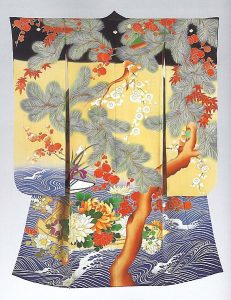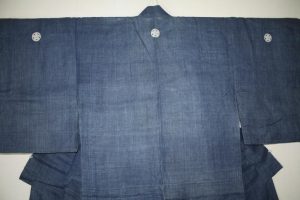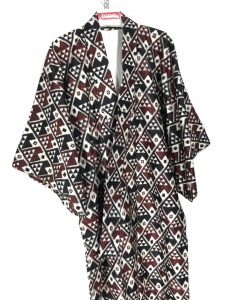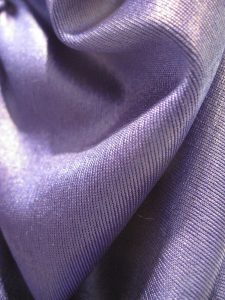Fav Kimono Fabric Selections 2024
So you you’ve decided to get creative with Kimono fabric. You’ve fallen in love with the lush patterning and imagery and colors. Well, theres plenty to consider when buying fabric. Aside from an attractive pattern, you should look carefully at the fabric’s weight, texture, and fabric content. There are so many different fabric options to choose from. This article will help you get started.
I’ve spent years experimenting with wearing different types of Japanese clothes, whilst living in and outside Japan. Most of the information on this page is drawn from Japanese language sites about kimono materials, and I’ve tried my best to translate and sythesize this information.
I’ll get into the nitty gritty of getting yourself some swish Kimono material swag below but if you just want to see the top three of my top 10 (actually 11, because we like a lot of Kimonos) I’ve listed those first.
If you’re interested in kimono craft, you may also be interested in these kimono and Japan Coloring Books.
If you’re just interested in getting a pre-made kimono we’ve got articles about our favorite, kimono shirts and male kimonos here. Or you can explore some different jimbei, samue, hanten jackets, kimono shirts, to see what else is out there.
#1 Silk Teal Floral Kimono Fabric
Pros
- Silk, the emperoro of Kimono fabrics!
- Vintage Japanese fabric
- Elegant drape
- Longer dimensions in length
Cons
- Vintage item means possible imperfections from previous use
#2 Classic Colorful Kimono Fabric
Pros
- Popping, vibrant colors
- Classic, trad patterning
- Printed cotton stretch satin fabric
- Flexible: 97% cotton + 3% spandex
- Sold by the meter
Cons
- Bright colors are generally associated with Kimonos for young people in Japan, so may not be appropriate for all ages.
- Possibly to overtly “Japanese” for some tastes.
#3 Vibrant Colored Wool Kimono Fabric
Pros
-
Pros
- Quality Wool Rustic weave
- Beautiful range of patterns
- Excellent condition
- Made from wool and rayon
Cons
- Not appropiate for making kimono for formal settings or occasions
How to choose the best fabric
Making your own kimono fabric garments is a rewarding project, and if done right, can result in a beautiful garment that you can wear for years and occassions to come. To help you make the best garment for your needs, we will look the different types of kimono fabrics, what differentiates the fabrics, the advantanges and disadvantages of the different fabrics, and finally, the appropiate settings for wearing certain kimonos.
Types of Kimono Fabric
We are going to look at four different types of fabrics for kimonos: silk, hemp, wool, and synthetic fiber.
Silk 
The words “silk” and “kimono” are synonymous, as many traditional Japanese kimonos are made of silk, called 生絹 suzushi or 絹 kinu in Japanese. There are several different types of silk that are used across the world:
- Mulberry silk
- Eri silk
- Tussar silk
- Muga silk
About 90% of silk in the world comes from Mulberry silk, and mulberry silk is the most common silk used in Japan, primarily because it is the softest.
Hemp 
A kimono made from hemp work very well in the summertime. Hemp is traditionally used for the men’s yukata, which is a casual robe, traditionally associated with bathing, with a simple sash.
Wool 
Because wool is very warm material, it is great for the winter. In fact, between 1926-1989 during the Showa period, wool kimonos were very popular in the daily attire of Japanese men, women and children.
Synthetic Fiber
Synthetic fiber has drastically improved in quality, texture, and appearance, and is therefore a popular choice for making kimonos. That being said, there are inherent disadvantages of using synthetic fiber, which we will discuss more thoroughly below.
Advantages of one type of fabric over the other
Silk is perhaps the best material you could find for making a classic kimono. A natural product coming from our old friend the silk worm, it is surprisingly strong. Silk is known to be incredibly insulating: it keeps you cool during the summer and warm during the winter. Because it is made from fiber that has the same protein as human skin, it helps your body retain moisture and keeps your skin looking fresh. Silk is also known to last a very long time, if it is properly cared for. Kimono made from silk are worn to both formal and informal events. That being said, silk is also the most expensive material you can find.
Hemp is light, cool, fast drying, and does not stick on the skin. For these reasons, it is a wonderful fabric choice for making a summer kimono or garments made of kimono fabric. A kimono made with hemp typically does not involve any sort of lining. The fabric is especially strong and durable, which makes it easier to clean without causing any damage. Hemp kimono fabric is generally associated with casual settings.
Wool has a rougher texture, but is very warm and stylish. Woolen kimono fabric is generally not worn in formal settings, but is more at home out on the streets with a scarf and hat. The woollen kimono fabric can be washed (but not dried!) at home without risk of damage.
Synthetic fiber is strong and safe to wash in the washing machine. If this is your first time working with kimono fabric, it might be a good idea to start with synthetic fiber, as the material might be easier to handle, and it is most definitely less expensive. Synthetic fiber can, however, irritate sensitive skin. Because it is not a very breathable material, it might get uncomfortable and sweaty, especially in hotter weather.
Best way to use different types of fabrics for kimonos
Silk fabrics are probably the best for most projects as it can be used in many different settings. Wool and hemp are best for casual occasions and seasonal settings. Synthetic kimono fabrics are generally considered least desirable, though they are cheaper and can be used in everyday garments, and in formal ones at a pinch.
#4 Cherry Blossoms & Cranes Kimono Fabric
Pros
-
Pros
- Features two of the most potent symbols of Japan – Cranes and Cherry Blossoms
- Vibrant but subtle colors
- Petal Signature Cotton
- 100% natural cotton with a versatile, plain weave. Perfect for quilting, craft projects, toys and accessories
- Design By: Juditgueth
- Adjust quantity to purchase multiple yards, will be printed as a continuous length
- Sustainably Made-to-Order by Spoonflower in Durham, North Carolina
Cons
- Cotton not as luxurious as silk
#5 Kawaii Sushi Wool Kimono Fabric
Pros
- Super unique, super kawaii material
- Non-traditional
- Petal Signature Cotton Fabric
- Petal Signature Cotton — 42 inches wide // 4.3 oz per square yard
- 100% natural cotton with a versatile, plain weave. Perfect for quilting, craft projects, toys and accessories.
- Design By: Gaiamarfurt
- Adjust quantity to purchase multiple yards, will be printed as a continuous length
- Sustainably Made-to-Order by Spoonflower in Durham, North Carolina
Cons
- Not suited to people looking for classic traditional kimono fabric
#6 Wave Pattern Wool Kimono Fabric
Pros
- Traditional Seigaha wave design and color
- Three designs in one lot – ideal for multi piece garments
- Light cotton for summer months
Cons
- Set sizes and patterns not customizable
#7 Festive Brocade Kimono Fabric
Pros
- Ornate festive color and pattern
- Brocade
- Shrink resistant
- Stitch-Bonded
Cons
- Non-silk Rayon / Polyester product
#8 Green Satin Brocade Kimono Fabric
Pros
- Rare vintage material
- appropiate for more formal atire
- Luxurious Satin Brocade
Cons
- possibility for stains or discolorations
- Vintage item has some uncertainty about whether material is Rayon or not
#9 Crane Patterned Wool Kimono Fabric
Pros
- Striking colors and pattern
- Traditional design
- Cranes are considered an auspicious animal in Japan bringing long life
- Four colours to choose from
Cons
- Cotton Chintz material is less traditional than others
#10 Patterned Beige Kimono Fabric
Pros
-
This material is sold by the yard and is 35 centimeters wide. The material is dotted with blue and beige half circles atop a lighter beige background, and would make a beautiful garment for a warm summer day.
Pros- beautiful earthy design
- Breathing hemp material
- excellent vintage condition
- unused
Cons
- mix of polyester and hemp fibers
- not appropiate for formal settings and occassions
#11 Kawaii Cats and Eggs Kimono Fabric
Pros
- Super cute cats & eggs (of course!)
- Perfect for kid’s kimonos and garments
- non-traditional
- pattern also incorporates traditional elements
Cons
- Not Made-In-Japan item
In our selection, we feel the the trad-silk option at #1 is hard to go past. It’s just hard to compete with mother nature and hundreds of years of tradition. But really a lot of the choice will come down to personal aesthetics. It can be surprisingly hard to find good quality Japanese materials and kimono fabrics online, so hopefully we’ve made the job a little easier.
If you are after bulk kimono fabric, try Yokodana Kimono here.
If you are a fan of kimono, you may be interested in checking out the Japanoscope guide to Jinbei clothing or Japanese pajamas.
Japanoscope uses affiliate links. Which means we may receive commisions when you click on some product links. We only link to products we believe in, use ourselves or think are genuinely good. This helps us keep all of the content on the site free of charge. As Monty Python once said, “We’re selling records in the foyer. Some of us have gotta eat too you know”.
